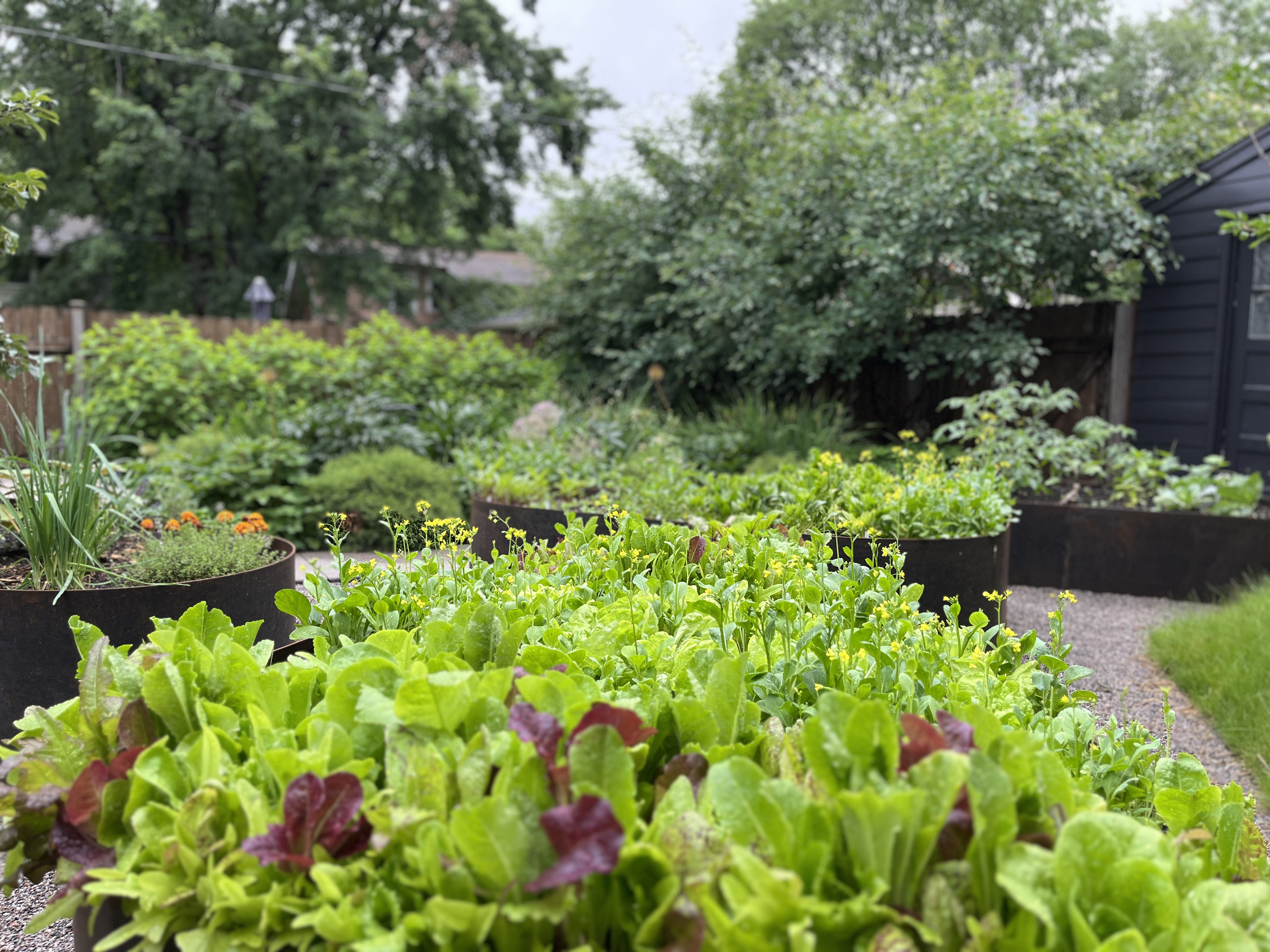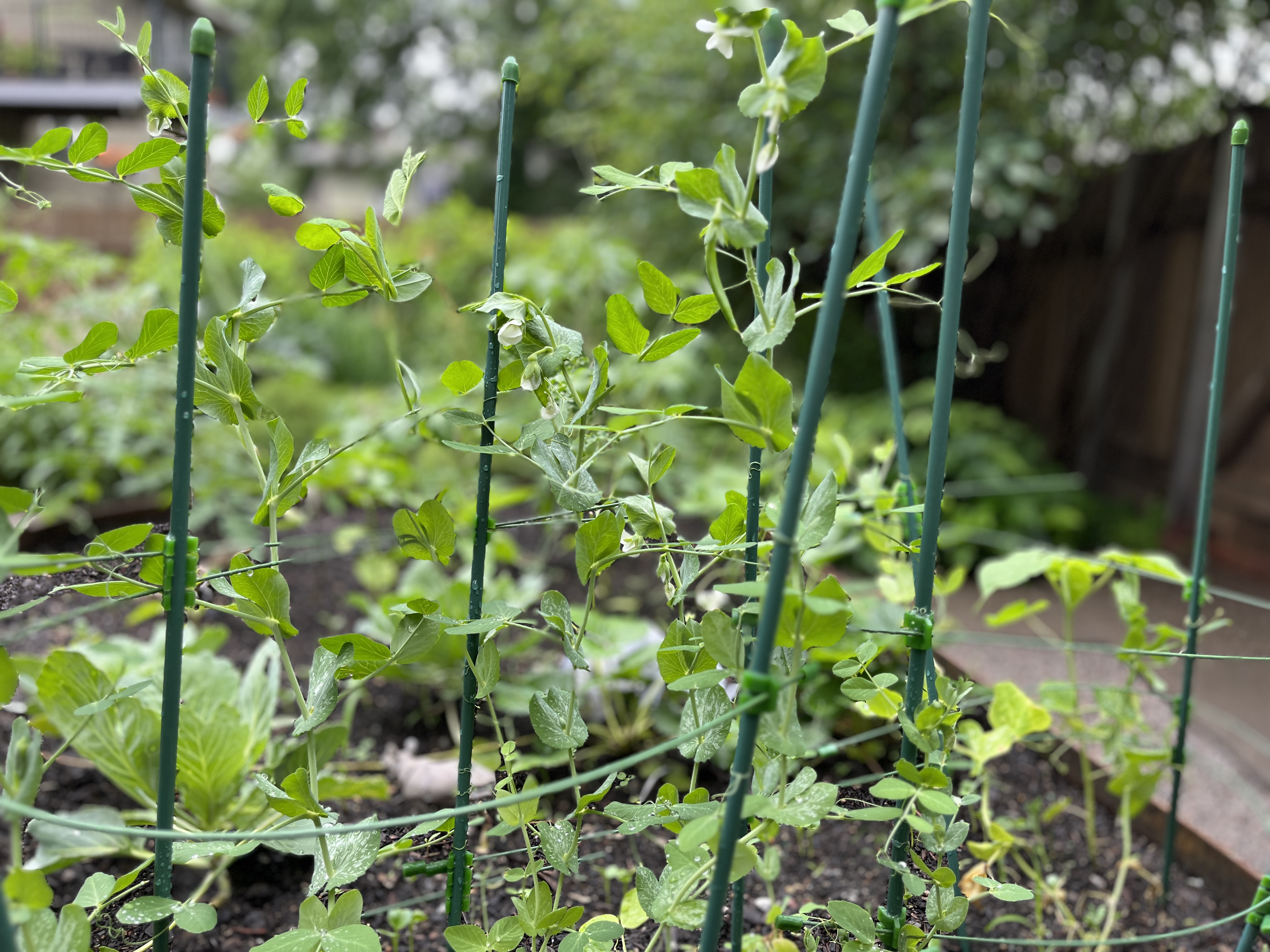The Little Farm — An Urban Oasis for Food Production
July, 2024
Short on space? Concerned about the aesthetics of a traditional vegetable garden? The Little Farm offers a solution where you can grow food in limited space while maintaining year-round beauty. Additionally, it creates a playful area for kids to enjoy hide-and-seek and build sandcastles.

Located in a dense urban neighborhood in St. Paul, The Little Farm has transformed half of its backyard into a cutting flower and viewing garden over the past four years. This year, the other half, previously a lawn, has been converted into a full-scale edible garden.
With four identical raised corten steel beds, custom-made on-site and arranged in various orientations, this 100-square-foot vegetable garden serves as an experimental plot to see how it can provide fresh produce for a family of three.
With four identical raised corten steel beds, custom-made on-site and arranged in various orientations, this 100-square-foot vegetable garden serves as an experimental plot to see how it can provide fresh produce for a family of three.

To add layers to the space, two fruit trees have been introduced: one edible crab apple tree and one apple tree, to allow cross-pollinating. A berm, matching the height of the planters, balances the space with greenery and relief.
Edible honeysuckle vines planted in front of the detached garage soften its appearance, while a row of honeyberries offers June berries.
Edible honeysuckle vines planted in front of the detached garage soften its appearance, while a row of honeyberries offers June berries.

The corten planters were custom-made on-site. Due to their thickness, a bobcat was used to bend them. After welding and reinforcing with cross-lattice, they were placed on concrete blocks. The construction was fairly simple, yet the impact is huge. This speaks to Ping’s vision of integrating design excellence into everyday life and objects.

The planter closest to the house and kitchen is designated for herbs, providing quick access for meal preparation. The planter furthest away is dedicated to warm-season vegetables, which take the longest to look full (mid-to-end June). The two middle planters are filled with leafy greens and root vegetables, allowing for frequent rotation and seasonal variations.
Edible flowers, such as marigolds, are interplanted in the raised beds to add color and enrich the soil.
Edible flowers, such as marigolds, are interplanted in the raised beds to add color and enrich the soil.



The transformation of the edible garden has been immensely gratifying. Watching plants grow from seeds to produce has become a cherished family activity, with picking fresh produce together being our favorite pastime.


